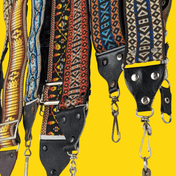Chasing Stars: A Beginners Guide to Night Photography
Chasing Stars: A Beginner's Guide to Night Sky Photography
Gazing up at the night sky has been a favourite pastime for generations. The stars, the moon, the distant planets – they all hold an unparalleled allure. Night photography allows us to capture this beauty, preserving moments that can be fleeting. If you've ever looked up at the heavens and thought, "I wish I could take a photo of that," then this beginner's guide is for you. So let's get started!

The Right Equipment for Night Photography
While capturing night shots doesn't require the most expensive camera or lens, a few essentials will make your experience far more enjoyable:
Camera: Ideally, a DSLR or mirrorless camera with manual mode. This will allow you to adjust settings to get the best shot.Lens: A wide-angle lens (such as 18-55mm) is great for capturing vast star-filled landscapes. If you're keen on shooting the moon or specific stars, a telephoto lens might be beneficial.
Tripod: The stars might not move quickly, but the Earth does. A tripod ensures your camera remains steady during long exposures.
Remote or Timer: To prevent camera shake, use a remote control or set your camera's timer.
The Right Location
Finding a dark spot away from the lights of urban areas is crucial for night photography. City lights can cause light pollution, washing out the stars and planets. Check out dark sky maps or local stargazing groups for recommendations on the best places near you.

Mastering the Camera Settings
One of the trickiest parts of night photography is getting the settings right. Here are some starting points:
ISO: This controls your camera's sensitivity to light. For night sky photos, start with ISO 1600 or 3200. However, the higher the ISO, the more "noise" or grain you'll see in your photo. You might think that working with low light would require a high ISO setting, but that could be a mistake. The higher your ISO, the more grain becomes an issue, so you'll want to go as low as possible. Take a couple of test shots at various ISO settings.Aperture: Use the widest aperture available (smallest f-number) to let in as much light as possible.
Shutter Speed: Begin with 20 seconds. If your stars look like little trails instead of dots, reduce the time. A popular rule is the "500 Rule": divide 500 by your lens' focal length to get the maximum shutter speed before stars start to trail. For example, if using an 18mm lens, 500 divided by 18 is approximately 28 seconds. Slow shutter speeds give you long exposure times, which allow you to capture star trails or light trails.
Composition is Key
Like all photography, the composition is vital in night photography. Some tips include:
- Use the rule of thirds.
- Include a foreground element, like a tree or a rock, to add depth.
- If you're capturing the Milky Way, try to position it as a diagonal line across your frame.

Post-Processing
Once you've taken your photos, the magic doesn't stop there. Editing software like Adobe Lightroom or Photoshop can help enhance the beauty of your shots. Adjusting brightness, contrast, clarity, and reducing noise can turn a good photo into a great one.
Practice, practice, practice!
Night photography has a learning curve. The more you practice, the more you'll understand what works and what doesn't. Every night sky is different, so keep experimenting and refining your technique.
Respect Nature
While chasing stars, remember to respect nature. Follow leave-no-trace principles. If you're using a torch or flashlight, choose one with a red light mode to preserve your night vision and minimise disturbance to wildlife.
Connect with Fellow Stargazers
Join a local astronomy or night photography group. Not only can you learn from more experienced members, but group outings can also provide safety in numbers when heading out to remote areas.
Keep an Eye on the Weather
The clearest skies are often in the colder months. But always check the weather before heading out. Cloud cover can be both a friend and foe in night photography. While clouds can obscure stars, they can also add dramatic effects when illuminated by the moon or other light sources.
Enjoy the Experience
Night photography isn't just about the final photo. It's about the experience of being under a canopy of stars, feeling small in the vast universe. It's about the thrill of capturing a shooting star or the Milky Way in all its glory. So, even if some shots don't turn out as you hoped, remember to soak in the beauty around you.
Chasing stars and diving into night photography can be both challenging and deeply rewarding. With the right equipment, knowledge, and a bit of patience, you'll be well on your way to capturing the wonders of the night sky.
Remember, every photographer started somewhere. So, grab your camera, head outside, and start your own journey in the mesmerising world of night photography. The stars are waiting for you.














